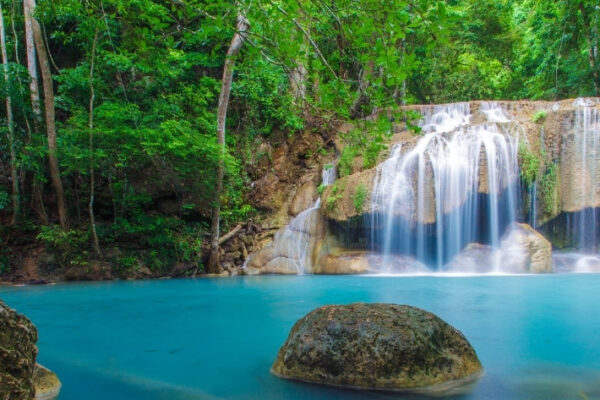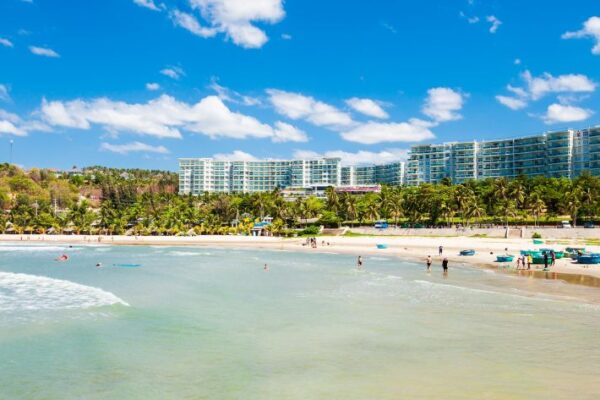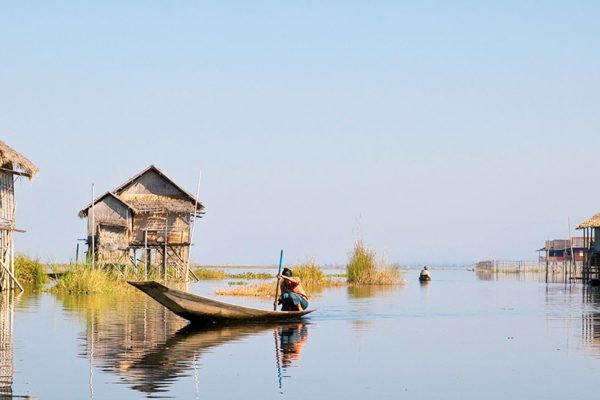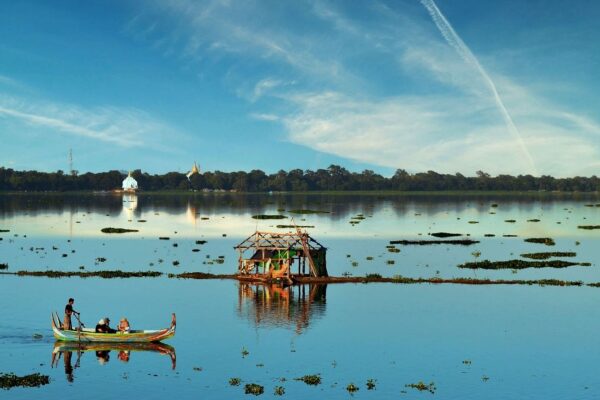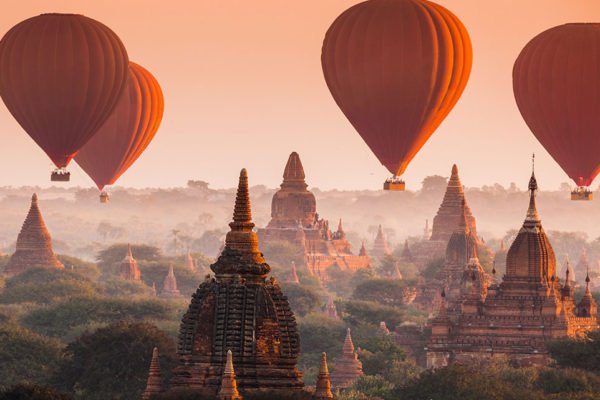Inle Lake: Beautiful Reflections Of Lives
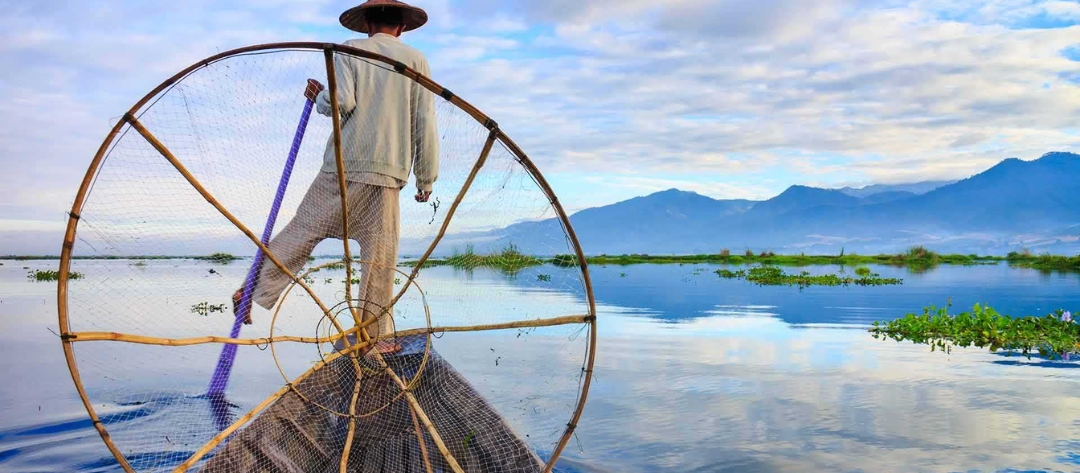
Inle Lake is Myanmar’s second biggest natural lake. It is a picturesque highland lake amid the Shan Plateau’s Nyaungshwe Valley, tucked between two mountain ranges that run from north to south and feel like a different world from the rest of Myanmar. The floating villages, gardens, and distinctive lifestyle of its residents make up the uniqueness of this freshwater lake.
Inle Lake has many interesting aspects that one may not be aware of. Luckily, this article is here to uncover all the charm of this beautiful lake.
Where Is Inle Lake? A Gateway to Timeless Myanmar
Inle Lake is nestled in Shan State, in eastern Myanmar, approximately 2,900 ft above sea level at the foothills of the Shan Hills/Blue Mountain Range.
How to get to Inle Lake
Inle Lake is well-connected to major cities in Myanmar, and you can reach it by air, road, or a combination of both. Below are the most common ways to get there:
- By air via Heho Airport: The fastest and most convenient way to reach Inle Lake is to fly to Heho Airport, the closest airport to the lake. Heho is about a one-hour drive (roughly 35 km) from Nyaung Shwe, the main town and marina for the lake. You can take daily flights from Yangon (about 1 hour 10 minutes), Mandalay (about 30 minutes), or Bagan (about 30 minutes) to Heho.
- Overland from Yangon: For those who prefer a scenic journey, you can travel overland from Yangon to Nyaung Shwe, a distance of approximately 660 km. This route can be done by bus or private car and takes around 10–12 hours. Overnight buses are a popular option, offering both budget and VIP services.
- Overland from Bagan: From Bagan, you can travel by road to Inle Lake, usually passing through Mandalay before continuing to Nyaung Shwe. The journey by car or bus takes approximately 8–9 hours. Alternatively, you can also take a short flight from Bagan to Heho for a faster trip.
- From Mandalay: If you are starting in Mandalay, you can reach Inle Lake by taking a 30-minute flight to Heho, or by traveling overland, which takes about 7–8 hours by bus or car.
- From Taunggyi: Another route is through Taunggyi, the capital of Shan State. You can reach Taunggyi by road or rail from other major cities, then continue by car or bus to Nyaung Shwe and onward to the lake.
Once you arrive in Nyaung Shwe, motorised boats are the most common way to explore the lake. For a more traditional experience, you can also hire a non-motorised canoe with a one-legged rowing guide.
Best time to visit Inle Lake
The best time to visit Inle Lake is from October to February, when the weather is cool, dry, and pleasant, ideal for exploring the lake and surrounding villages. This is also the festival season, so you can experience vibrant local celebrations such as the Phaung Daw U Pagoda Festival and the Festival of Lights.
Life on the Water: Unique Traditions That Define Inle Lake
Life on Inle Lake unfolds entirely on water, where homes, gardens, schools, and even markets float gently in harmony with nature. The people here have crafted a way of life that is as beautiful as it is ingenious, shaped by centuries of tradition and resilience.
In the heart of Inle Lake, the Intha people live in homes built on stilts above the water. Their name means Children of the Lake, and their lives are shaped by it. They grow vegetables on floating gardens, fish with handmade tools, and follow the teachings of Buddhism. Traditions are passed from parent to child, woven into every gesture of daily life on the lake.
Villages rise from the water like quiet kingdoms. Wooden houses stand on tall stilts, floating gardens bloom with tomatoes and squash, and children paddle to school in small boats. Every five days, bustling markets move from village to village where Pa-O and Intha people trade goods. Monasteries and pagodas float nearby, making these lake communities feel like cities suspended between sky and water.
Inle Lake’s fishermen are unlike any other. They stand at the edge of their boats, one leg wrapped around an oar, using it to row while balancing gracefully. This technique keeps their hands free to throw conical nets into the shallow waters. Passed down for generations, it is both a practical skill and a cultural dance, proudly performed during the sacred Phaung Daw Oo Festival.
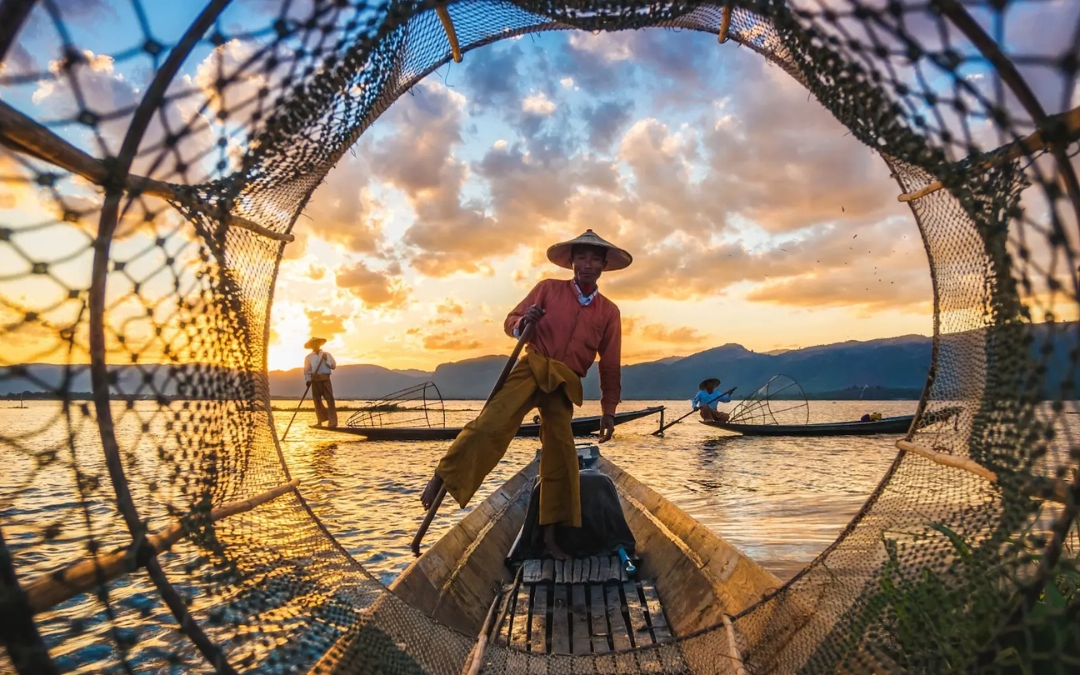
Inle Lake’s people are known for their traditional dance, showcasing the region’s rich culture.
In workshops that rest above the lake on teak stilts, women pull fine fibers from lotus stems and hand-weave them into rare fabrics used for scarves and robes. In nearby villages, silversmiths and goldsmiths create intricate jewelry using age-old methods. Others craft cheroot cigars, pottery, and handmade Shan paper. Each item holds a piece of Inle’s story, where craft is not just work but identity.
Top Attractions To Explore In Inle Lake
Floating Gardens
Nowhere else can you find gardens as breathtakingly beautiful as those at Inle Lake. The residents of the lake’s stilted towns cultivate stunning floating gardens to grow fresh produce for their delicious traditional cuisine.
On the northwest side of the lake, you’ll find the most extensive gardens. The lush foliage stretches out in rows beyond the residences, and locals can often be seen tending to the growing plants from their little wooden boats. Some of the oldest gardens are even firm enough to walk on because plant roots have extended down to the lake bottom and keep the gardens firm.
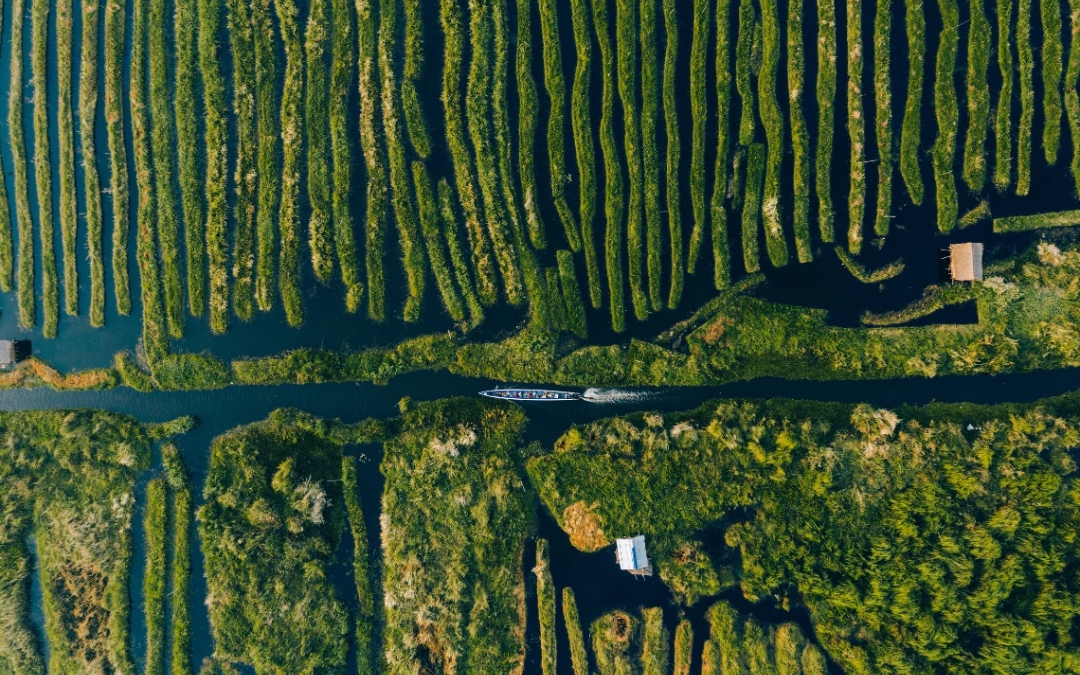
Inle’s floating gardens are unique platforms for growing vegetables on water.
17 villages
On the borders of the lake, there are 17 villages and islands, each with its unique customs and cultures. The Intha tribe is the largest and is renowned for its exceptional one-legged rowing technique.
Some Inthars reside in houses and wooden cottages on floating islands, while others live along the community lakefront. The area is also home to other tribes like Akha, Khun, Lahu-Na, Lahu-Shi, and Lisu, among others. Inle Lake is a peaceful coexistence of all these groups.
Five-day market
Visiting Inle Lake’s floating market is one of its most popular activities. A daily market provides the majority of basic purchasing needs. The five-day market rotates across the Inle Lake area, the Shan State towns of Nyaung Shwe, Heho, Taunggyi, Minethauk, and Shwe Nyaung, with each holding an itinerant market on the fifth day. Over 5 days, the various local tribal members move between five different areas to market their daily agricultural produce.
The lively water market attracts local Shan and Intha people, as well as a large number of Pa-O villages and the long-necked Padaung. This vibrant and lively gathering is the ideal venue in the Inle Lake area to learn about the many diverse and unique local cultures.
Phaung Daw U Pagoda
This red-and-gold tiered pagoda is the most popular attraction in the Inle Lake area. The walls of the temple are covered with paintings depicting Buddhist legends, making it stunning both inside and out. An exquisite shrine with five tiny Buddha sculptures of significant religious significance lies in the heart of the edifice.
The sculptures of Phaung Daw U Pagoda are well-known Buddhist relics wrapped in gold leaf, which worshippers use every day when they come to pray. Every year, an 18-day Pagoda Festival is celebrated to commemorate the five representations of Buddha. The royal barge, local boat races, and other events are all part of the festival.
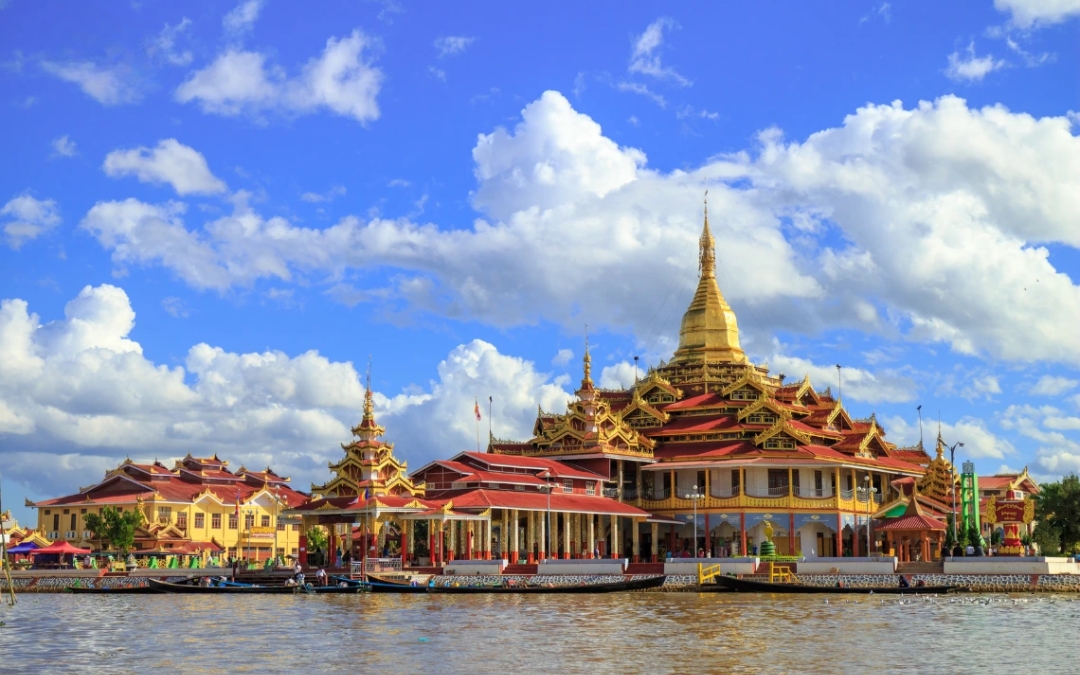
The pagoda is home to five sacred Buddha statues and hosts a major religious festival.
Shwe Yaunghwe Kyuang
The distinctive circular windows of the old teak tein (ordination hall) make a wonderful framing for photos of the novices, making this the most photographed monastery in Nyaungshwe.
Every day at approximately 11 a.m., the monks assemble to meditate, enabling guests to observe or perhaps participate in the meditation. The walls of the temple are decorated with hundreds of tiny alcoves, each with a little Buddha statue. These monuments were contributed by people from all around the world, including France, the United States of America, and Australia. They create a vibrant, stunning picture with bright walls and painted tile flooring.
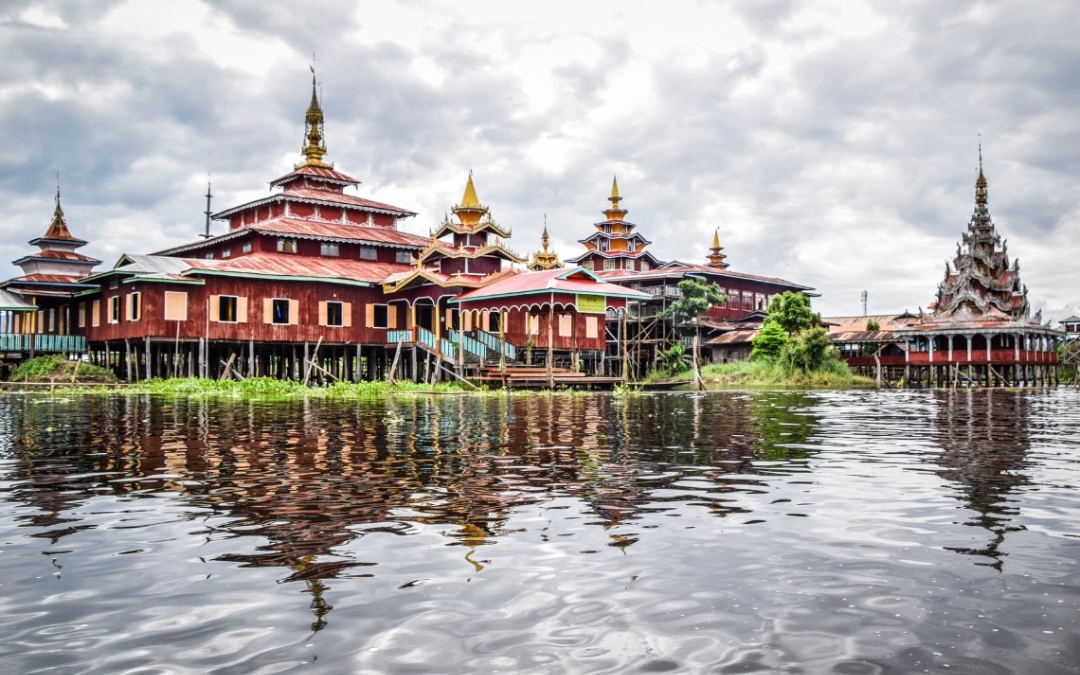
A peaceful monastery with beautiful teak architecture and a serene atmosphere.
Kakku
Kakku, which dates back to the 12th century, is a place with 2,500 historic pagodas overlooking Inle Lake. The majority of the pagodas on the property are the same size and are organized in neat rows. The main pagoda, which stands 130 feet tall, is located in the heart of the compound.
Kakku is located on the outskirts of Inle, in Pa-O territory. The drive to Kakku takes around 3 hours by automobile and is a lovely ride on narrow winding roads through traditional Pa-O villages and farmland.
Nga Hpe Kyuang
Nga Hpe Kyaung monastery on the western side of Inle Lake was originally famous for its leaping cats, who were trained to jump through hoops during the slack hours between scripture recitals. These days, there isn’t much cat-leaping happening around here. The new generation of cats seems to prefer sleeping over gymnastics.
The collection of old Buddha pictures is a stronger incentive to visit the pagoda. The massive hardwood meditation hall, built four years before Mandalay Palace, features statues in the Shan, Tibetan, Bagan, and Inwa (Ava) styles placed on elegant wood and mosaic pedestals.
Inthein Stupa Complex
The Inthein Stupa Complex is a sea of beautiful spires rising from the ground like a stupa forest. The complex is built into the hillside and features over 1,600 stupas, some of which are exquisitely carved and gilded.
Some pagodas have been rebuilt, but others have cracks in their foundations. This suggests that the dense jungle may take over the stupas. The complex contains two distinct groupings of stupas. The first is close to where the boat docks, and many pagodas are embellished with legendary animal themes. The second group lies at the summit of a hill, from where visitors can see the entire Indein Stupa Complex and the surrounding landscape below.
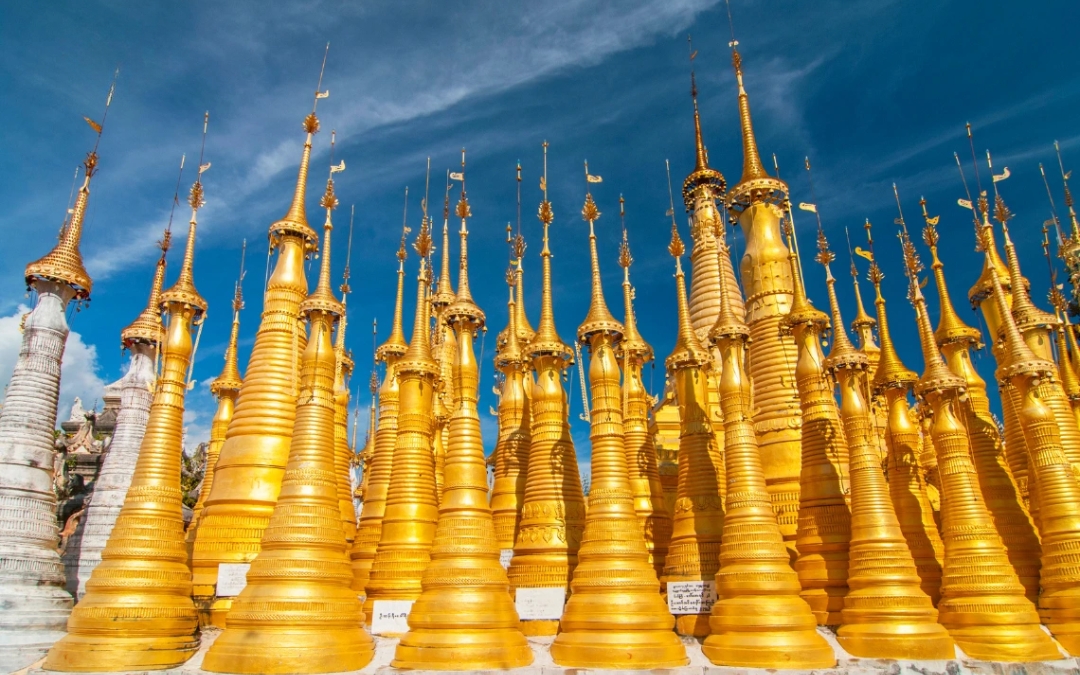
This ancient complex features hundreds of pagodas among lush hills.
Red Mountain Estate Vineyard
The Red Mountain Estate Vineyard is a unique winery in Myanmar that produces nine different types of wine using locally grown grapes. It offers visitors the chance to sample its affordable wines and take a tour of the vineyard.
Nestled on the lower slopes of the mountain, this winery is the perfect place to unwind after sundown with a cheese platter, a glass of wine, and great company. Visitors can enjoy a breathtaking panoramic view of Nyang Shwe and the valley leading to Inle Lake from the outdoor patio.
> See tour: Myanmar Classic Tour 15 Days
Top Experiences Around Inle Lake
Exploring Inle Lake goes beyond scenic beauty, it’s an immersive journey into the cultural and spiritual heart of Myanmar. From boat tours across glimmering waters to walking through ancient pagodas and engaging with traditional crafts, each activity offers a new perspective on life by the lake.
Boat Tours: The Quintessential Inle Experience
A boat tour is the most iconic way to explore Inle Lake, typically starting around 7:00 AM and lasting a full day. Riding in long-tail motorboats, travelers cruise across calm waters to visit villages, temples, markets, and workshops that reflect local culture.
Tours often include floating villages with stilt houses and gardens, leg-rowing Intha fishermen, and major landmarks like Phaung Daw Oo Pagoda and Nga Hpe Kyaung Monastery. Visitors also stop at lotus weaving centers, silversmith workshops, cigar-rolling stations, floating markets, and boat-building sites.
It’s recommended to confirm the route with your boat driver in advance, as some stops may be geared toward tourists. Certain activities, like staged fishing or visits to long-neck women, are often set up for photos and tips.
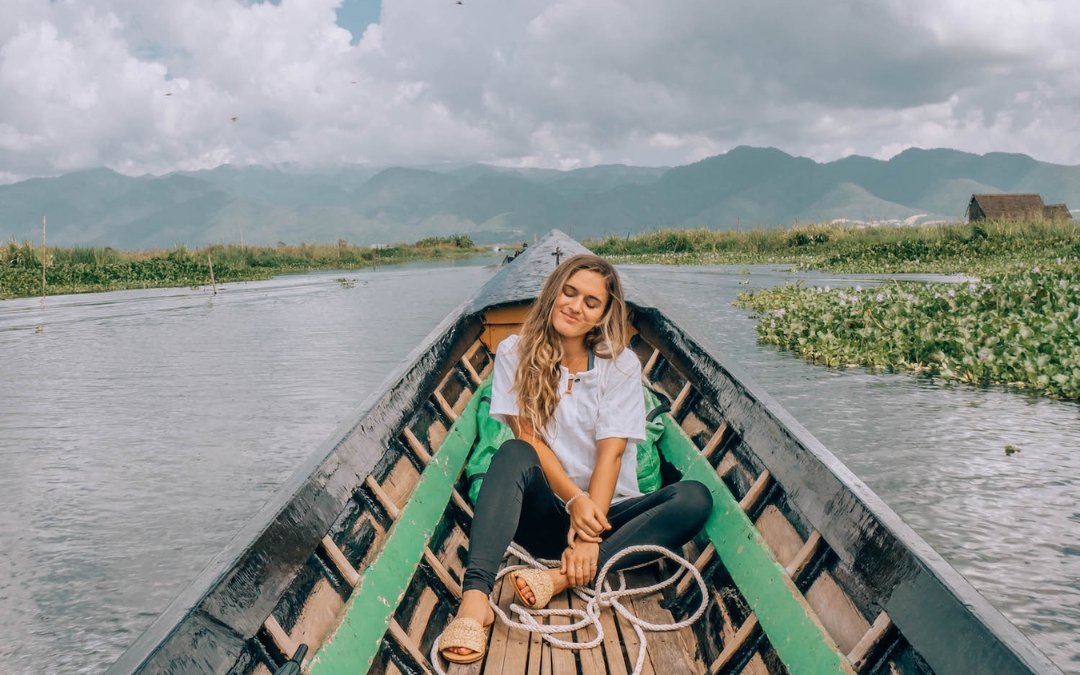
Exploring Inle Lake by boat offers views of floating villages and vibrant markets.
Tips
- Private boat rentals range from 15,000 to 25,000 Kyat (around USD 14) per day and can be booked through hotels or riverside operators in Nyaung Shwe.
- For the best photo opportunities, sunset hours are ideal. The lake glows gold as the sun dips, creating serene reflections perfect for photography.
Visit Indein Village and Shwe Inn Dein Pagoda
Indein Village, accessed by a narrow canal from Ywama, is a quiet corner filled with history. A short climb leads to Shwe Inn Dein Pagoda, a complex of more than 1,000 stupas in varying states of decay and restoration. Some structures are engulfed by tree roots or missing statues, giving the area an ancient, untouched feel, often compared to a miniature Bagan.
While the cultural significance of Indein to local beliefs isn’t heavily documented, the site reflects the spiritual devotion of Shan communities and offers panoramic views of the lake.
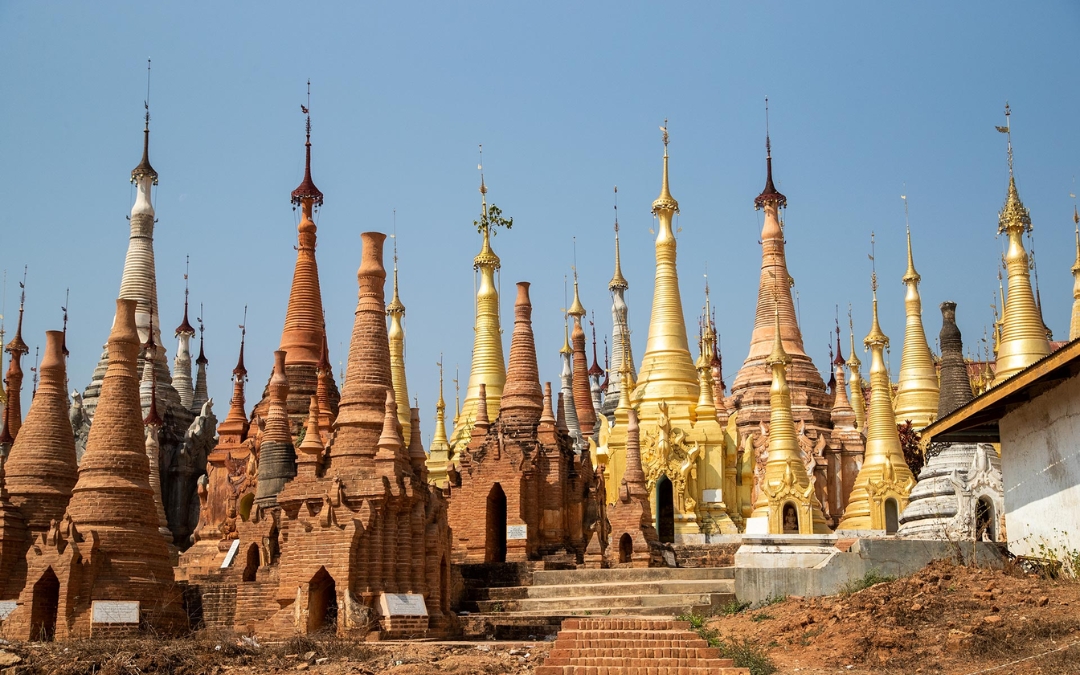
A scenic boat trip to Indein leads to the stunning Shwe Inn Dein Pagoda.
Local Workshops & Cultural Experiences
Inle Lake is rich in artisan culture, where centuries-old techniques are still practiced today. Beyond what you see during boat tours, dedicated workshops offer deeper insight into local craftsmanship and daily life. From lotus silk weaving to cigar rolling, these hands-on experiences highlight the skill and creativity of the region’s people.
Several villages also offer opportunities to explore boat making, jewelry crafting, and cooking classes. Visitors can take part in traditional Shan cooking with locals in Nyaung Shwe, or observe the detailed process of turning lotus stems into fine fabric. These workshops help bridge the gap between travelers and the vibrant culture of Inle Lake.
- Lotus silk weaving: unique to Inle, especially at Khit Sunn Yin weaving center
- Traditional cigar rolling: women roll hundreds of cheroot cigars daily
- Cooking classes: join a market tour and class at Myo Myo Cooking School in Nyaung Shwe
- Silver smiths and bamboo crafts: found in Nan Pan and other villages
- Boat building: workshops show how teak wood boats are constructed
- Traditional tattoos: available in some villages, but research is advised
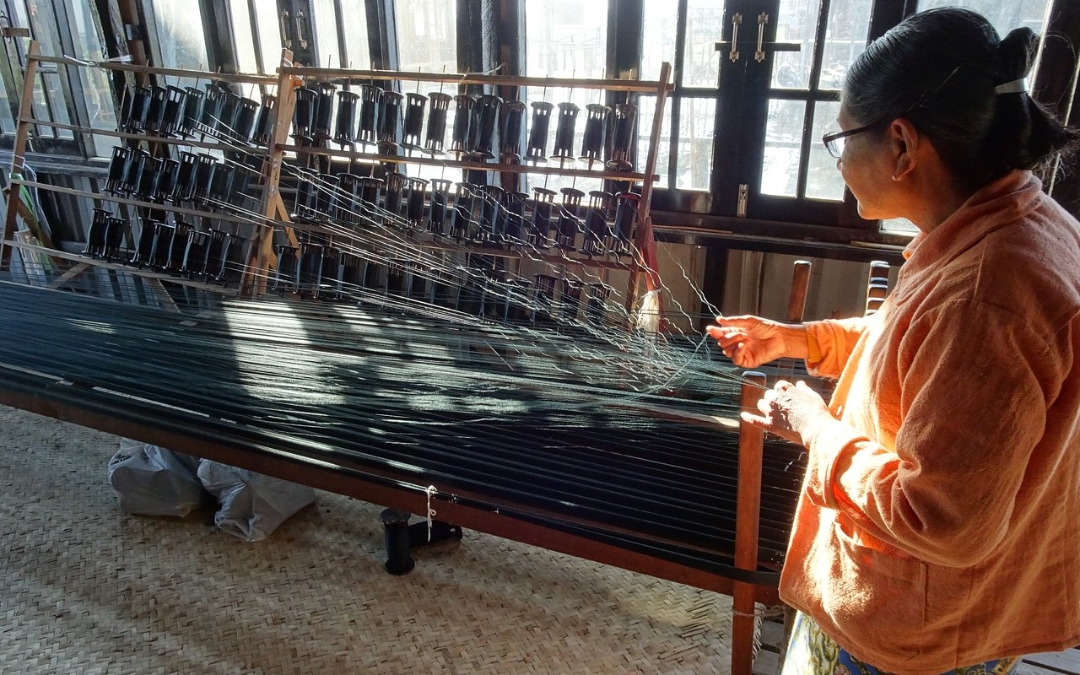
Experience Inle’s heritage by visiting local workshops for silk weaving and cigar making.
Cycling or Trekking Along the Lakeside Villages
Exploring Inle Lake by land offers a completely different perspective. Cycling through Nyaung Shwe and its surrounding countryside is a popular option, with many hotels offering free bicycles. Bike routes take you past wineries, hot springs, and through lush farmland, allowing for an active and scenic experience.
For more adventurous travelers, multi-day treks from Kalaw to Inle Lake pass through Pa-O, Shan, and Intha communities. These hikes offer homestays, home-cooked meals, and a closer look at local life. Whether cycling through fields or hiking through hills, the journey reveals the quieter, more personal side of the region.
- Cycling tours available from Nyaung Shwe, including winery and hot spring stops
- Bike-boat-kayak tours cover diverse terrain and cultural stops
- Treks from Kalaw to Inle typically take 2–3 days
- Local homestays offer cultural immersion and authentic meals
- Scenic views and ethnic encounters enrich the experience
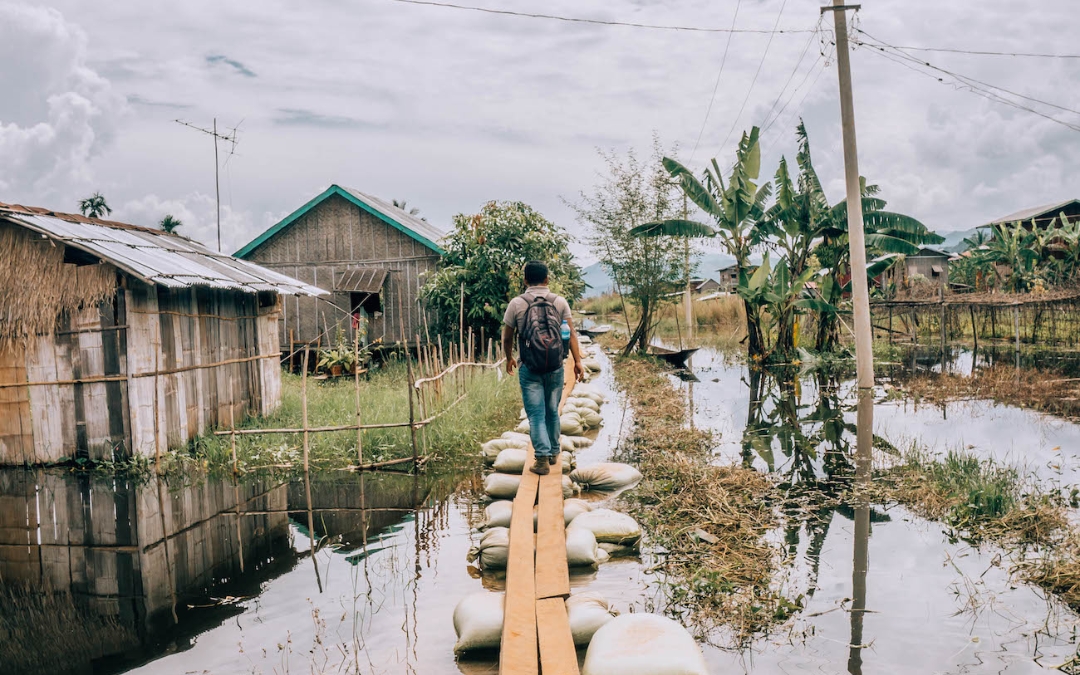
Explore Inle’s lakeside villages on foot or by bike to uncover hidden gems.
> See tour: Myanmar Temple & Beach 12 Days
A Taste of Inle: Where and What to Eat
Food plays a central role in the Inle Lake experience. The region’s cuisine reflects the heritage of the Intha and Shan people, featuring ingredients grown in floating gardens or caught fresh from the lake. Whether dining at a family-run restaurant or sampling produce at a floating market, the flavors of Inle are fresh, simple, and deeply rooted in local life.
Visitors can enjoy a variety of traditional dishes that balance taste with cultural authenticity. Tomato salad, fish curries, and noodles made from rice or wheat are just a few highlights. Meals are often served with local herbs and fermented vegetables, adding depth and texture to every bite.
- Inle tomato salad: a refreshing mix of lake-grown tomatoes, shallots, and lime juice
- Shan noodles (Shan khao swe): soft noodles in a mildly spicy tomato-based broth
- Fish curry: usually made with freshly caught lake fish, cooked with turmeric and local herbs
- Htamin jin: mashed rice mixed with fermented fish and garlic, a regional staple
- Lahpet: fermented tea leaf salad, commonly eaten across Myanmar
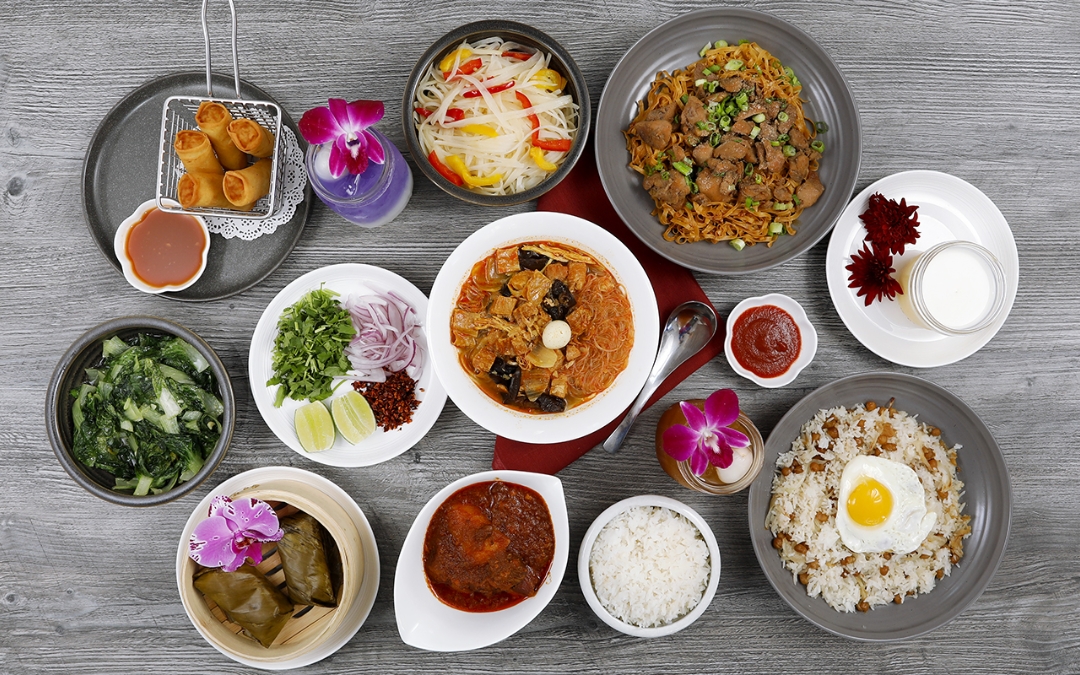
Try local dishes like fresh fish, Shan rice, and the famous leaf-rolled cigars.
Beyond traditional dishes, the area also offers scenic and memorable dining settings. Restaurants range from rustic local spots to elegant lakeside venues. Many of them use organic produce sourced directly from the lake or nearby farms.
- Intha Heritage House: serves authentic Shan and Intha cuisine in a traditional wooden building
- ViewPoint Lodge: offers fine dining in a tranquil setting with lake views and seasonal ingredients
- Sin Yaw and Lin Htet Myanmar Restaurant: highly rated for flavorful and healthy local meals
Markets and small eateries also contribute to Inle’s rich food culture. Local markets rotate locations every five days and serve as vibrant hubs where ethnic communities exchange produce and handmade goods. Some stilt-house restaurants are built directly above the water, giving guests the rare opportunity to dine while surrounded by the natural beauty of the lake.
- Five-Day Market: a moving market where vendors from various hill tribes sell food, fruits, and handicrafts
- Lakeside restaurants: traditional eateries on stilts offering fresh meals with panoramic views
- Nyaung Shwe night market: an evening stop for street food and casual bites, ideal after a long day of exploration
> Read more: Your Guide to the Top 10 Traditional Myanmar Dishes Every Traveler Must Try
When the Lake Dances: Festivals & Seasonal Highlights
Inle Lake comes alive during special times of the year, when centuries-old traditions meet vibrant community celebrations. These seasonal highlights offer travelers a deeper connection to the region’s spiritual and cultural identity.
Phaung Daw Oo Pagoda Festival (September–October): Sacred Buddha Statues Paraded on the Lake
Held annually between September and October, this is Inle Lake’s most important religious event. Four sacred Buddha images from the Phaung Daw Oo Pagoda are paraded across the lake on a royal barge, accompanied by hundreds of leg-rowing boats and cheering locals.
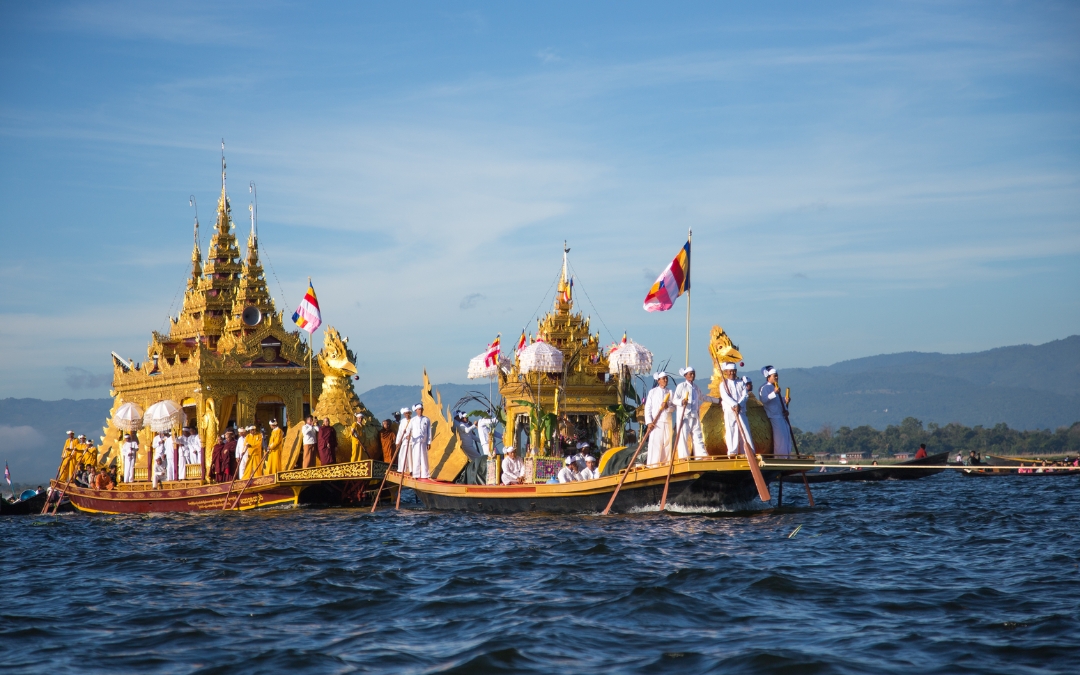
This important religious festival features processions and cultural performances.
Traditional Boat Races and Ceremonial Events
The festival also features boat races where Intha rowers showcase their unique leg-rowing technique. Other ceremonies include food offerings and merit-making in surrounding villages, adding to the spiritual atmosphere.
Hot-Air Balloon Rides in the Dry Season (October to March)
From October to March, visitors can enjoy sunrise hot-air balloon rides over the lake. The nearby Taunggyi Fire Balloon Festival in November is another seasonal highlight, with giant lanterns lighting up the night sky.
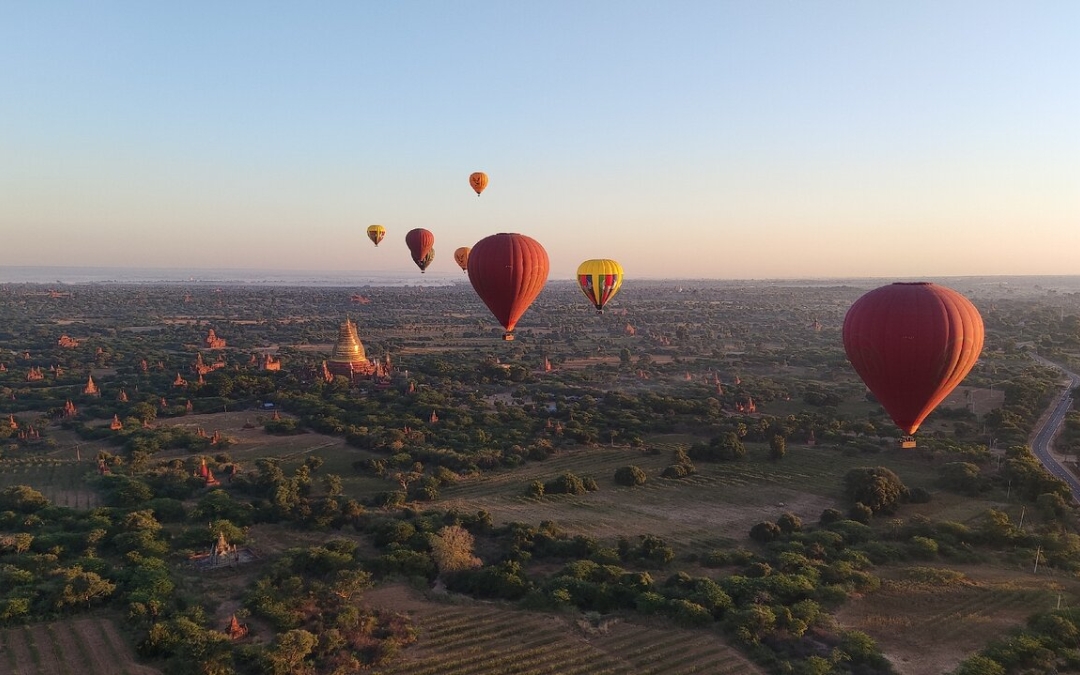
The Balloon Festival features colorful hot air balloons soaring over Inle Lake.
Where to Stay: From Floating Lodges to Riverside Charm
Inle Lake provides a diverse selection of accommodations, from luxurious overwater resorts to budget hostels in the nearby town of Nyaung Shwe. Whether you’re seeking tranquility on the lake or a convenient base close to restaurants and markets, there’s an option for every travel style.
Luxury Options
- Serenity Inle Resort: A peaceful lakeside resort with private villas, verandas overlooking the water, a pool, spa, and on-site dining. Ideal for couples and those seeking a secluded retreat.
- Inle Lake View Resort & Spa: Located in Kaung Daing village, this resort features scenic grounds, upgraded suites, and wellness facilities. Guests enjoy its quiet atmosphere and spacious layout.
- Ananta Inlay Resort: A tranquil getaway with stylish rooms, complimentary minibar, and breakfast. Slightly remote, but perfect for relaxation.
- Thanakha Inle Hotel: Situated in Nyaung Shwe along the river, offering riverside views, a large pool, and elegant rooms—well-suited for families and couples.
- ViewPoint Ecolodge: An eco-conscious property in Nyaung Shwe, nestled among lotus ponds, with a picturesque pool and environmentally friendly amenities.
Mid-Range Options
- Spring Inle Lodge: Cozy cottages with bathtubs, rooftop breakfast with lake views, and free bike rentals, just a short walk from boat departure points.
- La Maison Birmane: A boutique hotel with Asian-inspired wooden cottages, a serene garden, and homemade breakfast items like jams and muffins.
- Immana Grand Inle Hotel: Features a spacious pool, breakfast, and tour services. Slightly outside the town center but offers value and comfort.
- Trinity Family Inn: Mountain-view cottages, warm hospitality, and hearty breakfasts in the heart of Nyaung Shwe.
Budget-Friendly Stays in Nyaung Shwe
- Nyaung Shwe Town: The main hub for travelers, with a wide range of budget guesthouses and hostels, restaurants, and tour operators.
- Amazing Nyuang Shwe Hotel: Offers great views, friendly service, and convenient access to town activities.
- BaobaBed Hostel: One of the few hostels in the area, with a rooftop bar and spa, free breakfast, and bikes. A solid choice for backpackers.
Interesting Facts About Inle Lake You May Not Know
1. The Practice of Farming on Floating Gardens in The Lake Began in the 19th Century
Farming on floating gardens atop the lake’s surface has been a long-standing practice, predating the 1960s when it gained popularity. This agricultural technique originated in the 19th century, with farmers choosing to cultivate on the lake rather than around it.
Despite being threatened by pollution, lake runoff, and other climate change-related challenges, this approach has boosted the region’s economy over the years.
2. Boys Start Learning The One-leg Rowing Skill From 7 Years Old
The Intha’s ancestors devised a clever solution to keep the boats running while fishing. That involved propelling the boats with one of their legs and manipulating the fish nets by hand. This original fishing method was passed down as a tradition from generation to generation for thousands of years. Intha is claimed to have learned to fish at the age of 13 and continued to do so until he was 75 years old.
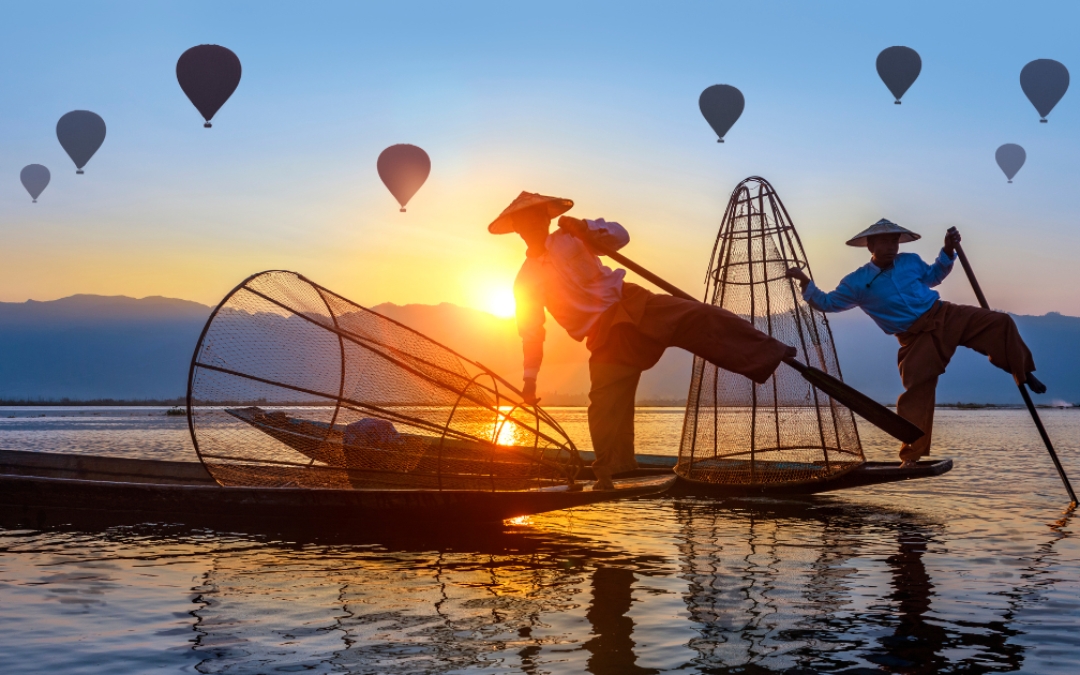
Boys start learning the one-leg rowing skill on Inle Lake at the age of 7.
3. Inle’s Floating Gardens Produce the Finest Tomatoes in Myanmar
During the 8-month growing season, tomatoes are picked while green or just blushing and delivered throughout Myanmar. The tomatoes grown at Inle are among the finest in the country.
Inle tomatoes are used to produce a traditional Myanmar tomato salad, including sliced shallots and peanuts. A sesame seed dressing is added to the combination to prepare the fantastic and famous Myanmar salad meal.
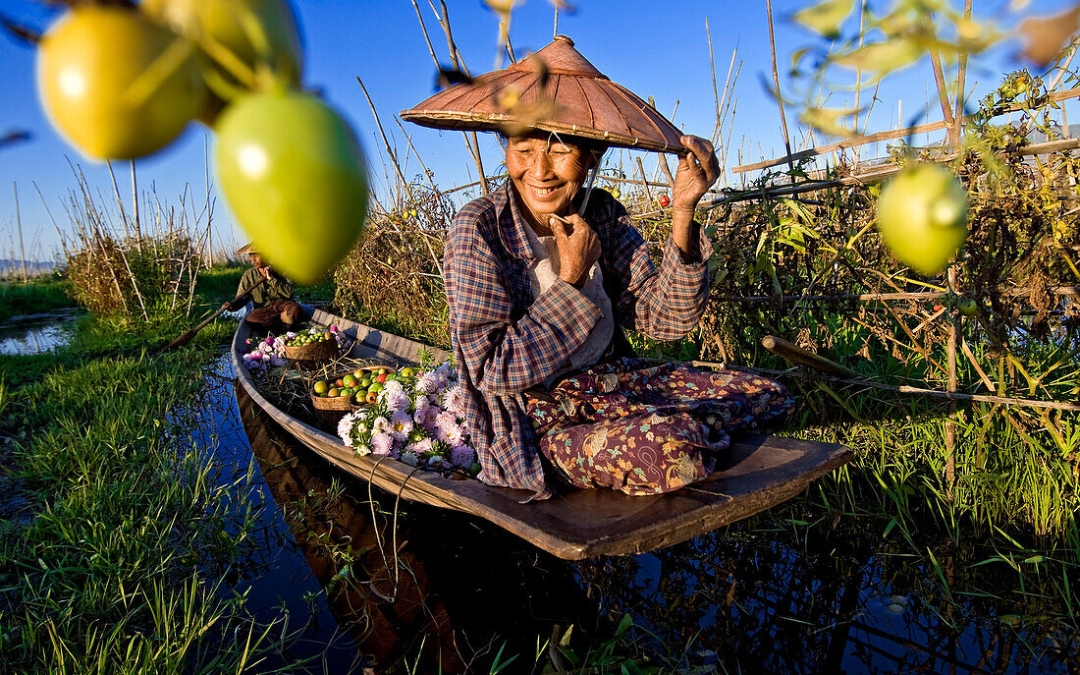
Inle’s floating gardens are known for producing some of Myanmar’s finest tomatoes.
4. 25% of the Lake’s Surface is Covered by the Floating Gardens
The floating gardens, consisting of fresh produce such as fruits and vegetables, cover around 25% of the lake’s surface area. The agricultural sections are supposedly protected by an outside barrier of reeds and water hyacinths.
Reeds and water hyacinths are sometimes planted alongside colorful annuals like Cleome and Amaranthus to protect the cultivated patches.
5. Handicrafts & Weaving Are Important Local Industries
Handicraft is an important part of the local economy, and many magnificent woodcarvings, smoking pipes, decorations, fabrics, cheroots (leaf-rolled cigars), and other handmade objects are created in cottage industries and sold at both local and tourist-oriented markets.
Weaving is another major local industry, and Shan bags are produced in significant quantities for daily usage. The lake is also known for the Inle longyi, a luxury garment handwoven from silk fibers. The kya thingahn, a fine garment made from lotus plant fibers, is used as a robe for revered Buddha figures.
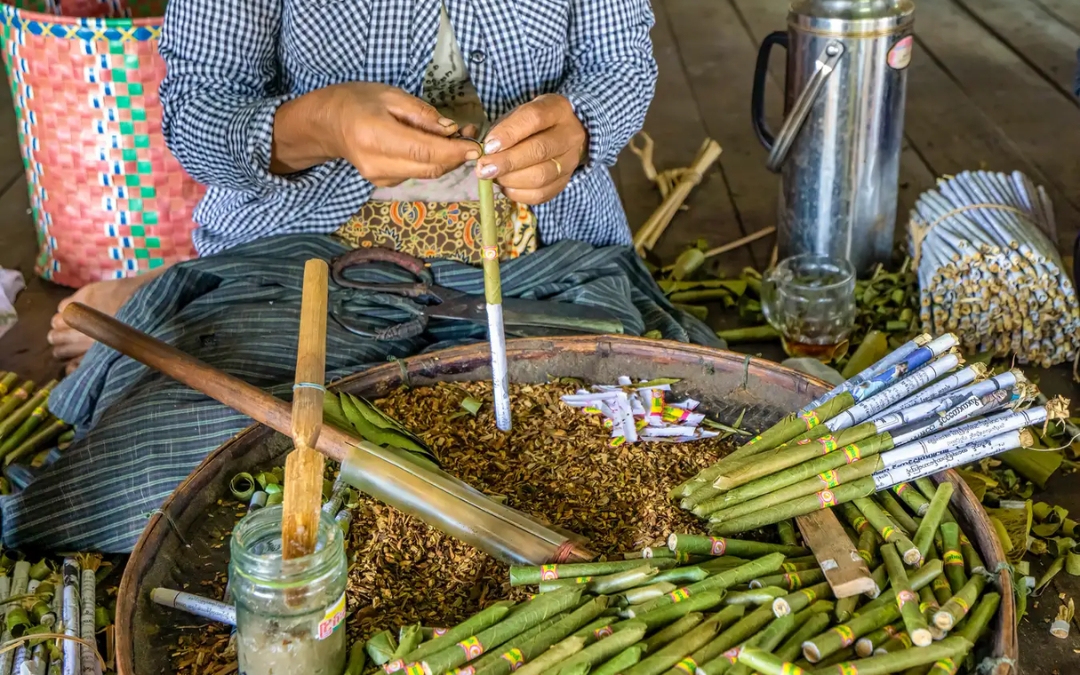
Traditional leaf-rolled cigars are hand-crafted, offering a unique and flavorful smoke.
6. One of the largest Buddhist festivals in Myanmar is held at Inle Lake
The Phaung Daw Oo Pagoda Festival, held in and around the stilted villages of Inle Lake, is one of Myanmar’s greatest Buddhist festivals. The event occurs between the first day of the waxing moon and the third day following the full moon of Thadingyut, corresponding to September and October in the Western calendar.
Four of five treasured Buddha statues are paraded around the lake on an extravagant, golden barge towed by traditional long boats staffed by hundreds of rowers for over 20 days.
Let Us Help You Plan Your Trip To Myanmar
Inle Lake is a stunning destination offering a blend of natural beauty and rich cultural heritage. From its tranquil waters surrounded by mountains to the floating gardens and traditional stilt houses, every moment here is a peaceful escape. You’ll have the opportunity to experience unique local crafts, enjoy boat rides through serene landscapes, and explore the way of life of the Intha people who have lived on the lake for generations.
Let Asia Pioneer Travel design your perfect itinerary to Inle Lake, ensuring you experience the best of this beautiful location. We’ll take care of all the details, so you can focus on creating lasting memories.
